Michel Pastoureau, the French historian and anthropologist, through numerous studies and publications has investigated the history of color far and wide, filling at least in part the knowledge gaps that insisted on the evolution of the relationship of color and human civilizations, in fact attesting himself as one of the leading experts on the subject. Several times he reiterated how, before him, contributions on the historical problems of color had usually been limited to the pictorial or artistic field in general, or at most to the scientific field, without ever trespassing on social history, a phenomenon to which color also pertains, since “it is society that makes color, that gives it a definition and meaning, that constructs its codes and values, that establishes its uses and the scope of its applications.” In short, the French essayist has amply demonstrated how color is anything but a natural phenomenon, but rather “a complex construction” and a “social fact.”
Artists, for their part, have very seldom posed these problems, instead trying to promote the idea of color as a transcultural and neurobiological truth, that is, one capable of arousing specific sensations without distinction of time, geography, culture or society. For this reason, the research that through her artistic practice Elisa Nepote, an emerging artist, born in 1985, from Savigliano, in the province of Cuneo, but who works and operates in Milan, appears particularly unprecedented. Here, in a suburban neighborhood is her studio, arranged in a basement of a modern building, dotted with small blue tiles, almost a predestination of what we will find inside. In fact, the “La Cattedrale” atelier, where other artists besides Nepote work, houses in one section the fruits of the continuous research that the Piedmontese painter self-sacrificingly carries out: studies, canvases, cloths and sheets, brushes and tubes of color, all rigorously soaked in variegated shades of blue.

 In the studio of
In the studio of In the studio of
In the studio of In
In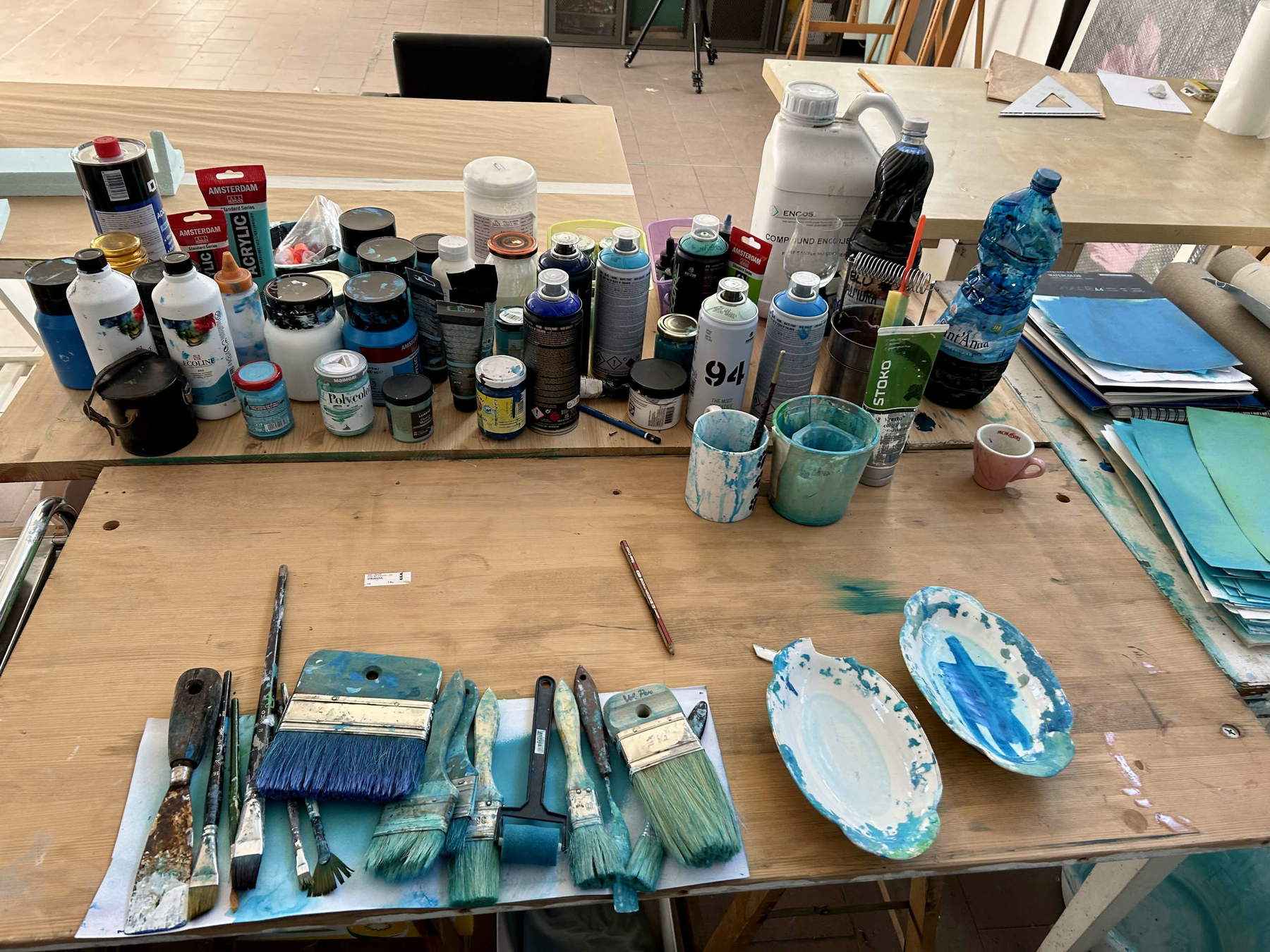 In the studio of
In the studio of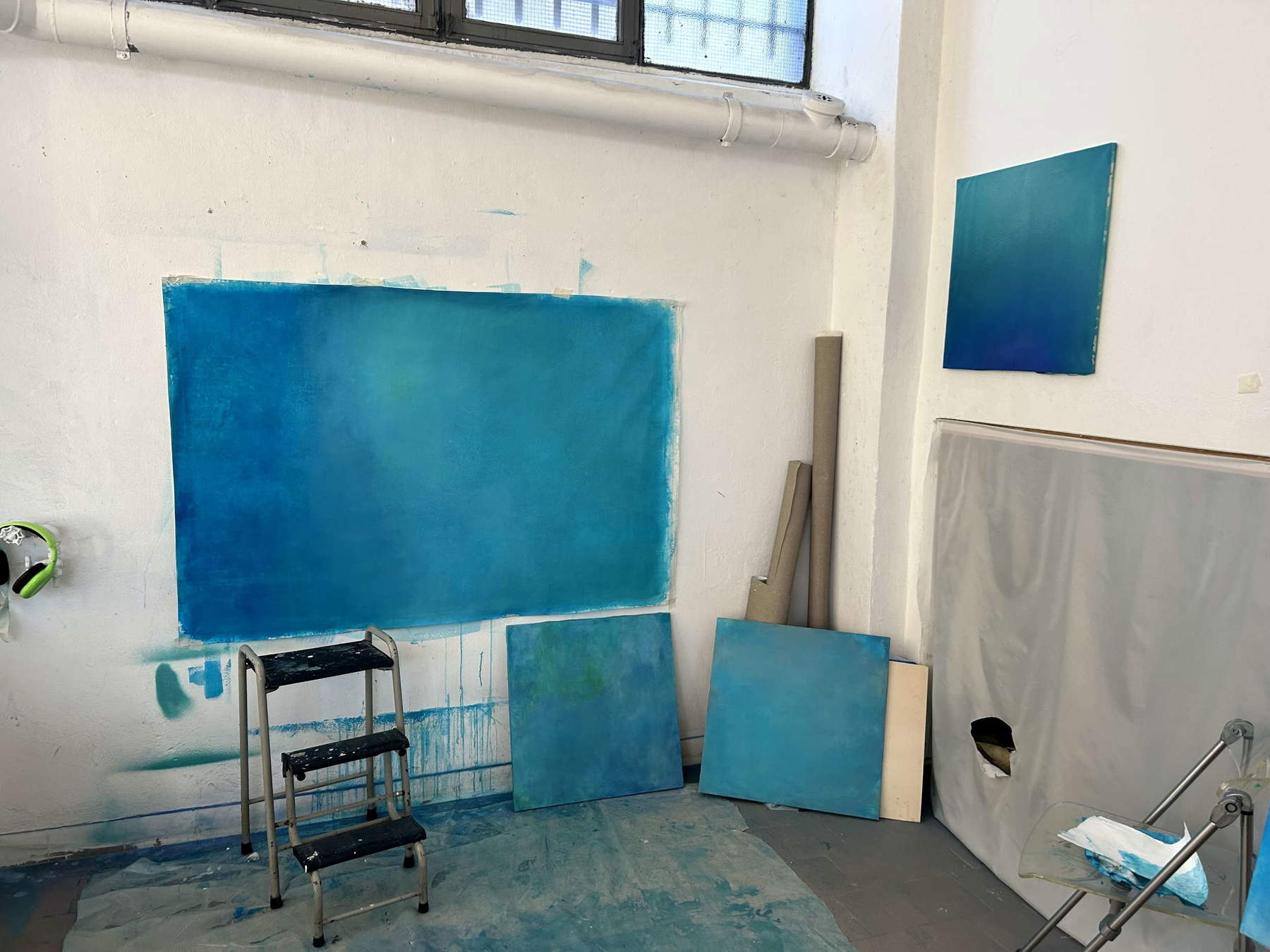 In the studio of
In the studio of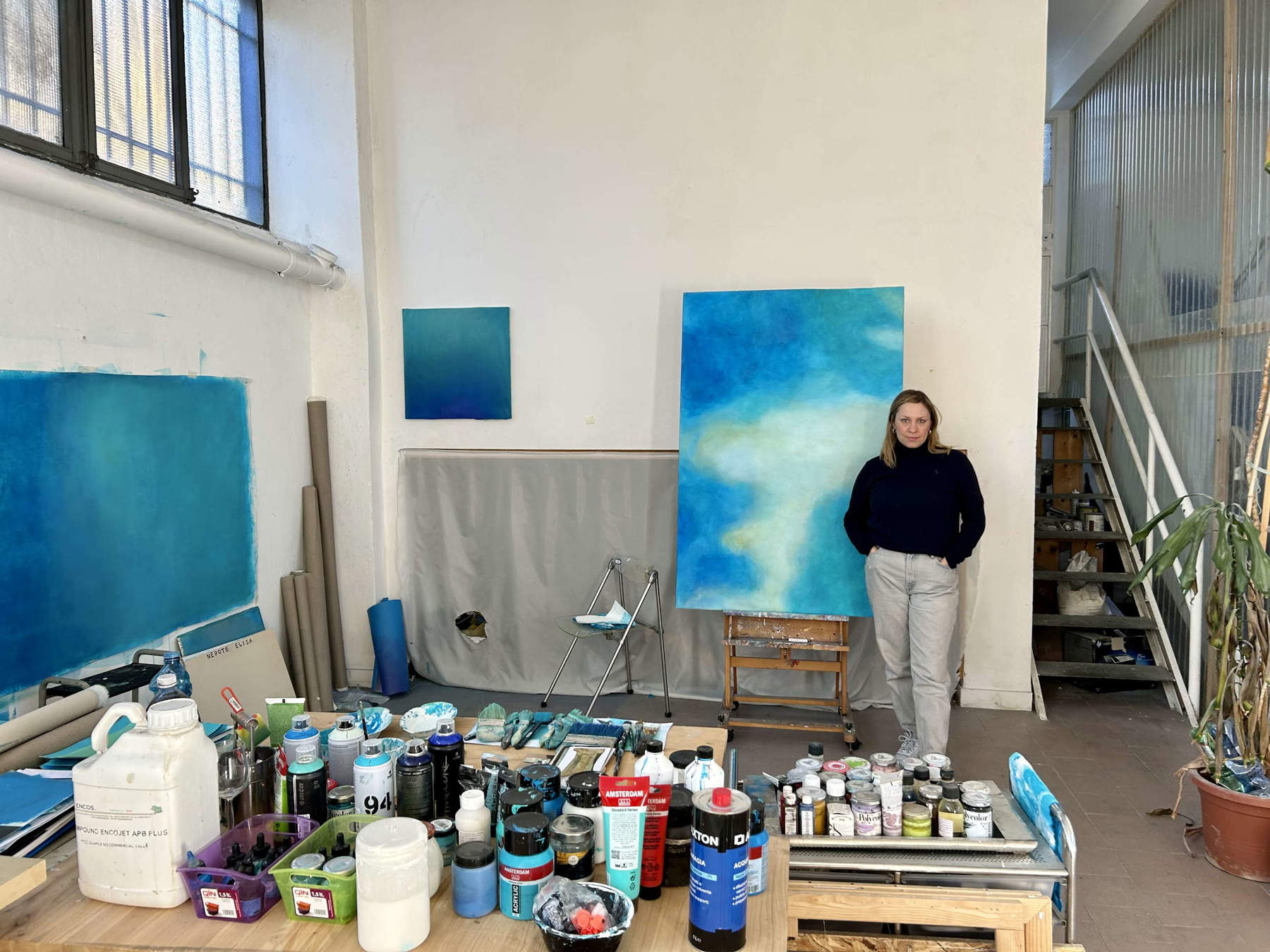
It is in fact to the blue that Nepote has consecrated all her latest efforts, in an artistic journey that began at the Albertina Academy of Fine Arts in Turin and was then perfected at Brera, but that was also forged in the studio of sculptor Fabio Viale and in various restoration, design, furniture and fashion workshops. For some time now he has abandoned a figurative production, centered on faces, poised between classical suggestions, underground influences and inferred from the world of tattoos, to put the phenomenon of the color blue under scrutiny.
Like the French anthropologist, she is keen to emphasize how color is a social fact. In our contemporary times, blue turns out to be the most beloved color, preferred by about two-thirds of Westerners according to statistics, but this was not always the case; in fact, in the origins of civilizations, colors such as red, white and black were preferred, and were present practically without interruption in every corner of the world. Blue, on the other hand, is known to have been reproduced by human beings only with considerable delay and manufactured with no small difficulty.
As a result, every time and place boasts a different relationship with the color blue, Nepote is keen to point out how, for example, it was not appreciated in ancient Rome, as it was considered the color of Barbarians; in fact, Celts and Germans when they went down to war were used to dye their bodies and faces with these shades with the purpose of intimidating their opponents. In the Middle Ages, by contrast, blue became a highly sought-after and precious color, often equated with the divine. It is precisely these discordances that fascinate Nepote, and which prompted her to investigate with her painting the values lurking around the reception of this color. It is a quest that could occupy a lifetime, and perhaps it would still not be enough, and of this the artist is aware.
Creatives who usually interface with this color, even without pursuing Nepote’s analytical bent, keep well in mind the fundamental research in this regard done in contemporary art, such as Klein’s or, if they sink into art history, turn to the ultramarine blues of Giotto’s Scrovegni Chapel. But the young painter has adopted an almost scientific disposition, beginning her investigations almost from the beginning. In fact, in the past year, her efforts and interests are all assimilated with the role that blue played in Egyptian culture, among the first to make recurrent use of it and associate it with the dimension of the sacred.

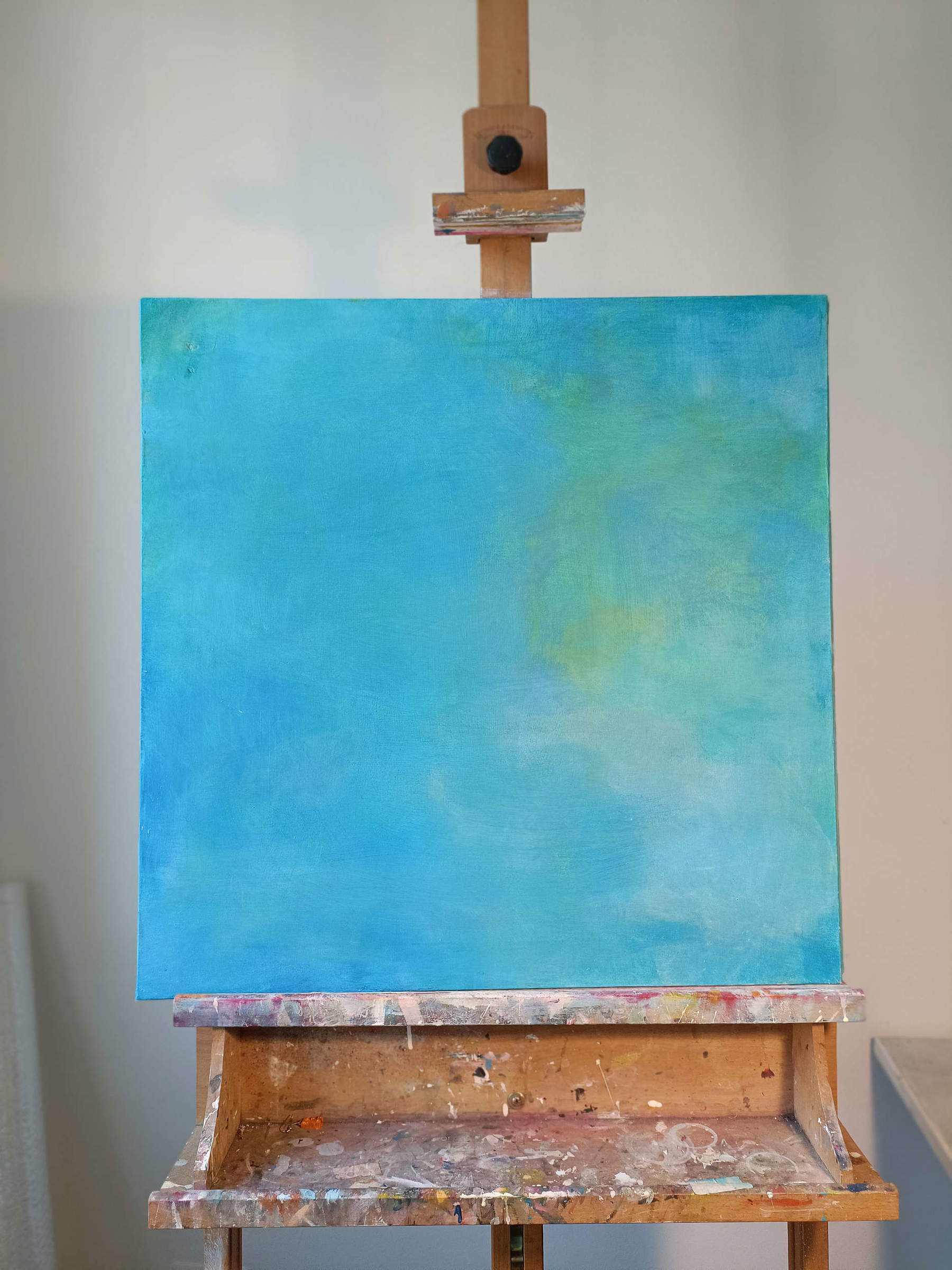
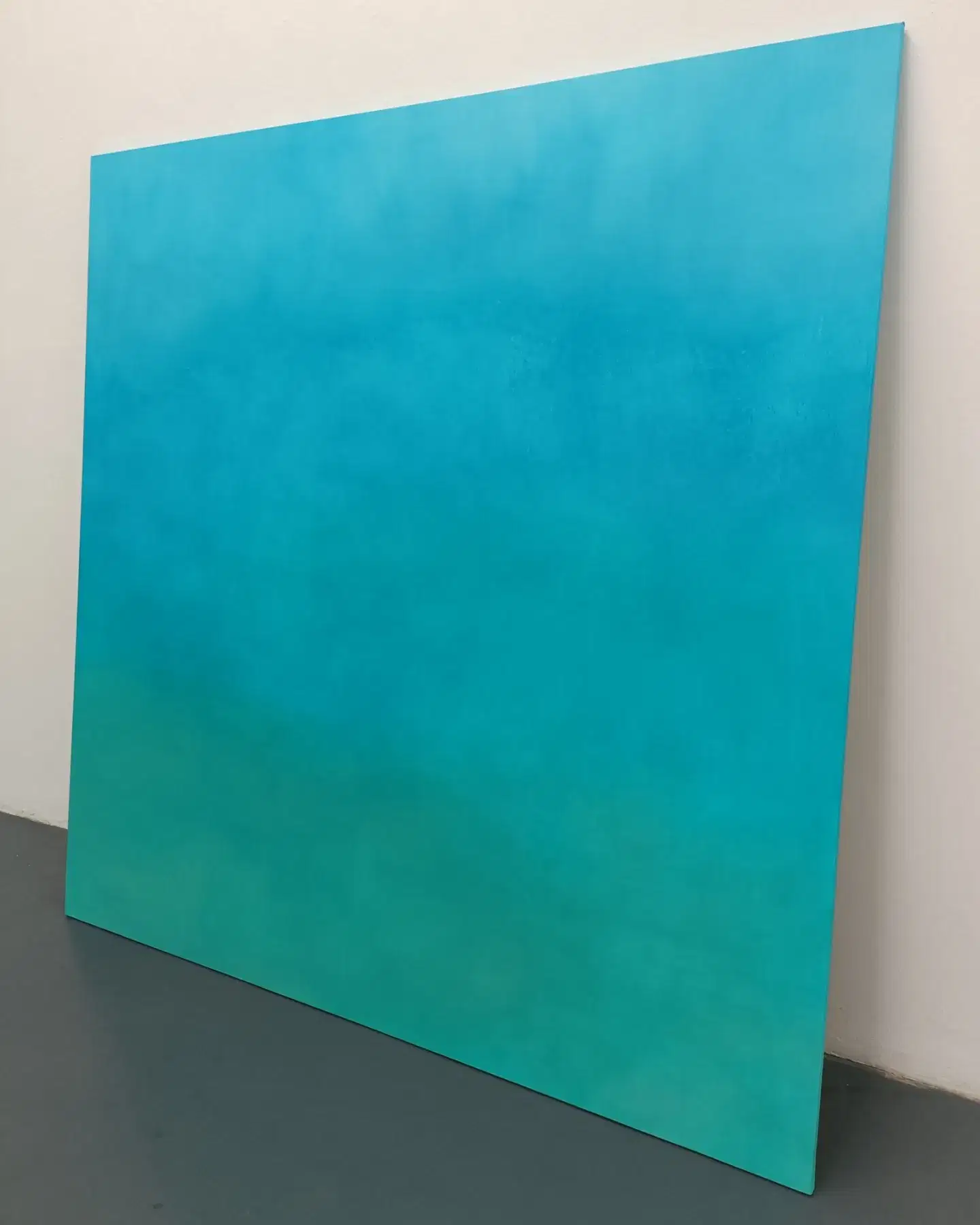
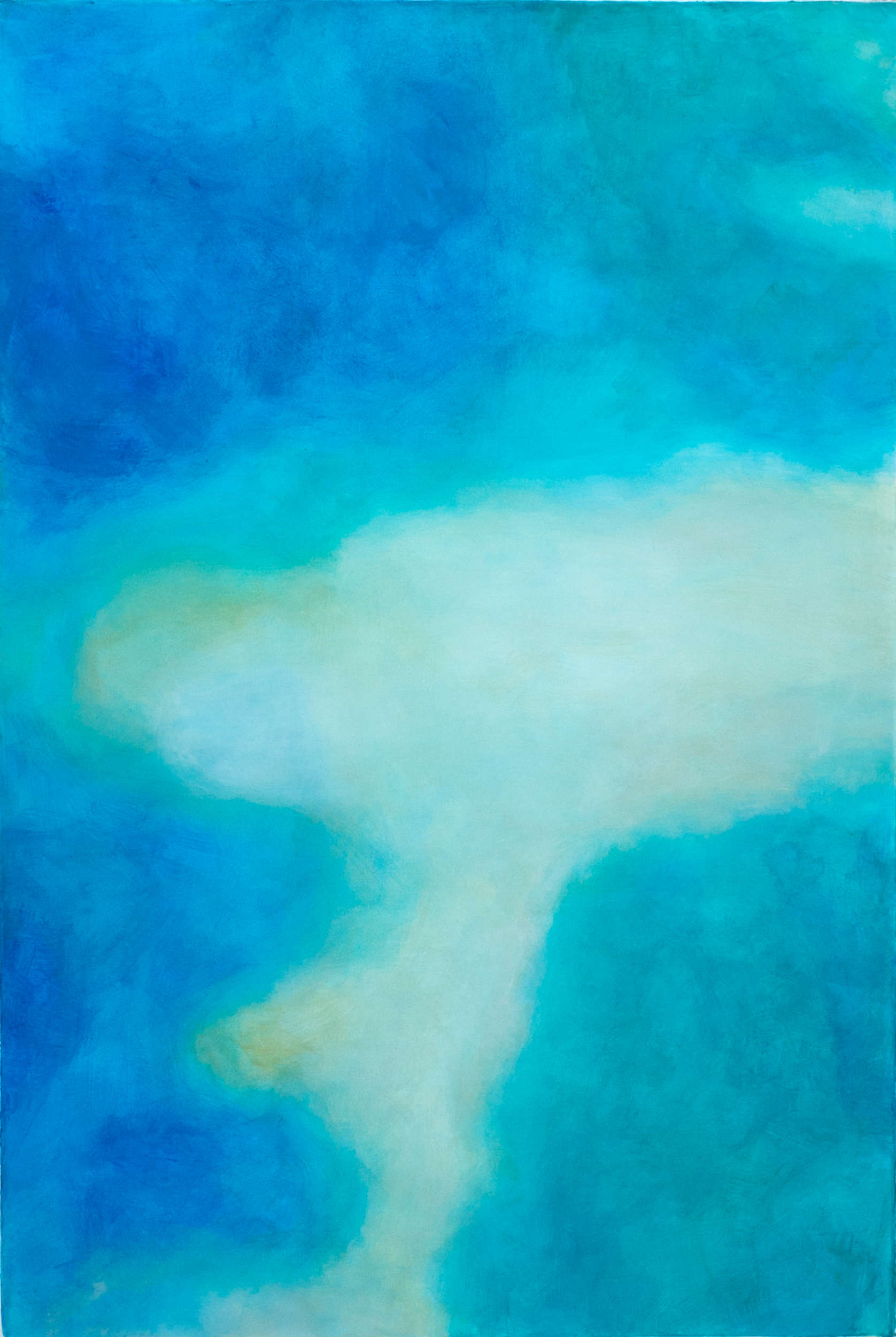
In particular, on the work table she lays out a conspicuous sampling of images and photographs of ushabti, funerary statuettes that were widespread in ancient Egypt, in mummy form or in the garb of humans, generally blue in color, they were made of various materials, from expensive lapis lazuli or other stones, wood or faïence, a glazed paste with high gloss values. These were fundamental elements for the grave goods of the deceased, who even after death had to continue their activities in the afterlife; in fact, they could receive assignments from Osiris, and to fulfill them they used the help offered by the ushabti. The wealthiest deceased possessed one for each day of the year plus an additional overseer for each group of ten, up to a total of 401 servant statuettes.
A large number of these artifacts have come down to us, and each has a different state of preservation and therefore a different coloration, from deep blue, to turquoise, to the most faded. This endless catalog of gradations fascinates Elisa Nepote, who reports her reflections born from these artifacts on canvas or cardboard.
Her works appear only apparently monochrome, for as one approaches them one notices an infinite variety of gradations, textures and graphic marks that enliven the surfaces, creating ever-changing movements, sometimes soothing at other times more impetuous. These workings give rise to unpredictable perceptual effects by tickling different emotional temperatures.
The works he creates exude great discipline and attention to experimentation, and although we might believe they arise from a certain amount of impulsiveness and the unpredictability of chance, they are instead preceded by multiple studies and calibrated sketches, which are translated into finished paintings only when they satisfy the artist.
This meticulousness can also be read in his creative space: in fact, his studio is as much reminiscent of an alchemist’s workshop as that of a restorer: on his workbench are arranged numerous notes, formulas, color scales, and then the materials of his creativity, brushes and spatulas of various kinds, the jars of acrylic paints, sprays and inks. In fact, at the moment she has chosen not to confront oil painting, which would not guarantee her the same intensities, but prefers to probe these sharper, fuller-bodied colors.
An otherworldly dimension is often present in her works, the result of the artist’s fascination with the link between the color blue and the afterlife in Egyptian civilization, in which death, unlike today, was perceived as a new reality, devoid of the mournful and morbid component.


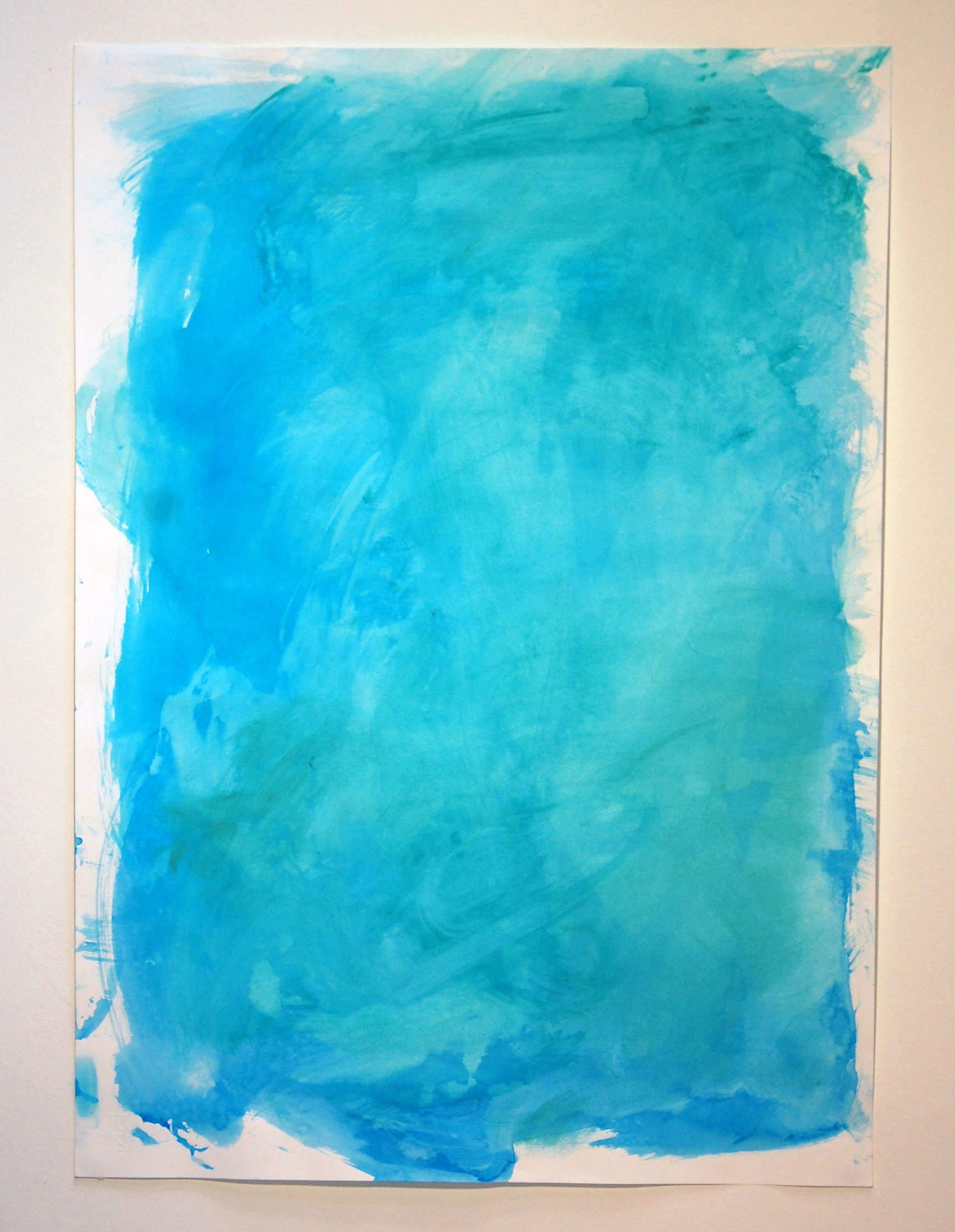
Nepote is equally seduced by natural phenomena, the sky and the sea for example: these two large blue fields are often encountered in her works, as in History of a Reflection, a canvas protruding from an easel in the studio. “Almost as in a wedding photo of sky and earth,” says the painter, the two elements interpenetrate reaching a new harmony as they are crossed by the flicker of a lighter reflection, registering a flickering light on the two surfaces. Elsewhere two rather compact backgrounds face each other and divide the canvas, in still other works instead thick veils settle, often scratched by small graphic marks or moved in texture as in the painting Sepolcro Terracqueo, recently exhibited at the Giovanni Bonelli Gallery.
It seems safe to say that Elisa Nepote’s painstaking investigation of the color blue, not only in its sensory and perceptual component but also in its social and cultural measure, has its own goodness and interest.
Precisely because this is a practice rather at odds with that of so many contemporary artists, who too often indulge in ringing individual and personalistic discourses, where exhibiting a controversial biography, childhood memory or trauma should in itself be a source of interest, emphasizing instead how theartist can and should still investigate the fact and phenomenon, whether small or large, in the same way as the experimentalism of the scientist, but certainly with the tools that are peculiar to the creative, does not seem to us at all a vain instance, just as reflecting on the past, without having to wearily repeat or flaunt it, but actualizing and harmonizing it through the filter of contemporary experiences, in a path that would be worth undertaking. The premises are all there, now it is up to the artist to carry them forward with genuineness and perseverance.
Warning: the translation into English of the original Italian article was created using automatic tools. We undertake to review all articles, but we do not guarantee the total absence of inaccuracies in the translation due to the program. You can find the original by clicking on the ITA button. If you find any mistake,please contact us.